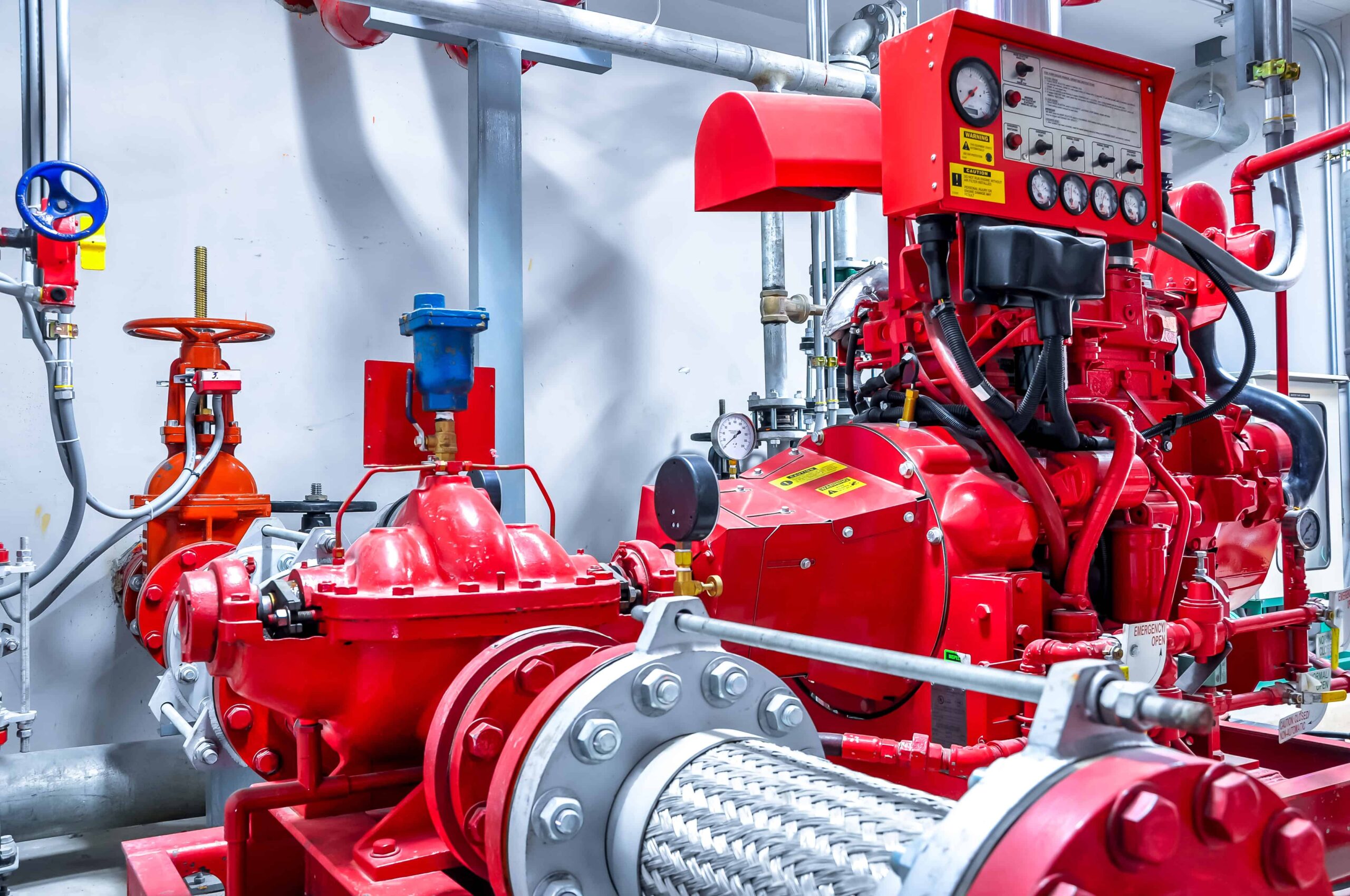A fire pump is a mechanical device used to increase the water pressure in a fire protection system. It provides enough pressure to activate sprinklers or feed fire hoses, especially in high-rise buildings, large homes, commercial buildings, or anywhere the main water pressure is too low. In a high-rise apartment building, the water pressure decreases as you go up. This means that if a fire starts on the top floor, the municipal water supply alone may not be able to supply enough water. Fire pumps ensure that the water pressure remains strong and constant throughout the building, so that fires can be effectively fought no matter where they start.
Water source
The fire pump needs a reliable water source. Depending on the situation, this could be a city water main, a storage tank, a lake, or even a well. The water source must always have enough water to meet the firefighting needs of the building. In urban areas, municipal water systems are common, while buildings in rural areas may rely on tanks or ponds. The fire pump itself does not store water – it simply pumps water from the source to the building’s sprinkler system or standpipe system and forces it in at a higher pressure.
How a Fire Pump Starts During a Fire
Fire pumps do not run continuously. They are automatically activated when the water pressure in a fire protection system drops. This pressure drop usually occurs when a sprinkler system opens due to the heat of a fire, or when a hose valve opens. When the pressure drops below a set level, the fire pump controller detects this and activates the pump. In some buildings, there is also a manual control to activate the pump when necessary. Once activated, the fire pump forces water through the system at a high force to help control or extinguish the fire.
Types of Fire Pumps
While all fire pumps have the same basic function, different types of fire pumps are used depending on the size, layout, and specific needs of the building. Horizontal split-case pumps are commonly used in commercial buildings and are easy to maintain. Vertical turbine pumps are used when water needs to be pumped from an underground water source, such as a well or deep water tank. End suction pumps are compact and suitable for small buildings or places with limited space. Vertical inline pumps have a small footprint and are easy to install, making them ideal for medium-sized buildings. Each type of pump has a specific application scenario, but they all have the same function: to provide high-pressure water in the event of a fire.
Fire pump power sources
Fire pumps can be powered by electricity, diesel, or steam. Electric motors are common in many buildings because they are quiet and low-maintenance. Diesel engines are used when a building cannot rely on electricity alone in the event of an emergency. Steam turbines are rare today, but are still used in some industrial settings. Many important buildings install both electric and diesel pumps to ensure that they continue to function even if the power goes out during a fire.
What a fire pump controller does
The fire pump controller is the brains behind the fire pump operation. It monitors water pressure, starts the pump when needed, and warns of problems. The controller also records pump operating data, which can be used for maintenance and safety checks. Modern fire pump controllers can be connected to the fire alarm system or building management software, allowing for remote monitoring and faster response to emergency situations.
How Fire Pumps Work with Sprinklers and Standpipes
When activated, the fire pump pumps water into the building’s fire-resistant pipes. If a sprinkler system is installed, the water is forced into the activated sprinkler heads at the correct pressure. This helps to quickly control the fire at the source before it spreads. In buildings with standpipes (vertical pipes that allow firefighters to connect hoses from above), fire pumps ensure that water reaches these connections at sufficient pressure so that firefighters can effectively extinguish fires without having to drag heavy hoses up stairs.
Testing and Maintaining Fire Pumps
A fire pump is a safety device that you may never see in action, but it must work perfectly when you need it. Regular testing and maintenance is therefore essential. Fire pump systems should be tested weekly or monthly for basic operation and undergo a comprehensive annual performance test to ensure they can deliver the correct pressure and flow of water.
The pressure from a municipal water line is usually sufficient. However, for larger or multi-story homes, especially in rural areas, or for homes that use water storage tanks or wells, a fire pump may be necessary if a sprinkler system is installed. Some luxury homes also have fire protection systems that use small fire pumps to maintain sufficient pressure so that fires can be extinguished quickly, providing additional safety to the home.
Why Fire Pumps Are Critical to Building Safety
Fire pumps are an invisible but essential part of a fire protection system. They play a major role in saving lives, protecting property, and providing the support firefighters need to do their jobs. Without a properly functioning fire pump, even the best sprinkler system or hose configuration may not be enough. For building owners, this means taking fire pumps seriously: choosing the right system, installing it correctly, testing it regularly, and making sure it meets local safety codes.
Conclusion: A Smart Investment in Fire Safety
You don’t need an engineering degree to understand how a fire pump works. At its core, a fire pump is simply a machine that delivers water with force when it’s needed most. For building and homeowners, understanding the basics can help you ask the right questions, hire the right professionals, and ensure your home is prepared when a fire breaks out. Whether you own a large commercial building or a multi-story home with advanced fire protection, a reliable fire pump is one of the smartest investments you can make in safety. It quietly guards the perimeter until you need it to strike like a hero.

